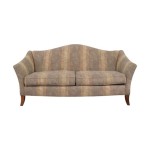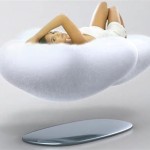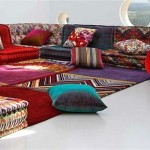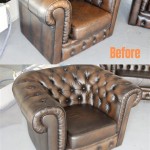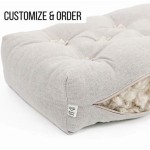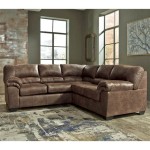Foam or Fibre Filled Sofa: A Comprehensive Comparison
The selection of a sofa is a significant decision for any homeowner. Sofas frequently serve as focal points in living spaces, offering comfort, aesthetic appeal, and functionality. Among the numerous factors to consider, the filling material significantly impacts the sofa's overall feel, longevity, and suitability for specific needs. Foam and fibre are two of the most common filling options, each possessing distinct characteristics that cater to different preferences and requirements. This article will provide a detailed comparison of foam and fibre-filled sofas, exploring their respective advantages, disadvantages, and suitability for various lifestyles.
The internal structure of a sofa is a complex system contributing to the overall comfort and durability. From the frame to the suspension and finally, the filling, each component plays a vital role. The filling material dictates the level of support, softness, and resilience offered by the cushions. The choice between foam and fibre, therefore, warrants careful consideration.
Understanding Foam Filling
Foam filling in sofas generally refers to polyurethane foam, though variations exist, including memory foam and high-density foam. Polyurethane foam is manufactured in various densities, each offering a different level of firmness and support. The density of the foam directly correlates to its durability; higher density foams resist compression and maintain their shape for a longer period. Memory foam, a type of polyurethane foam, conforms to the body's shape, providing pressure relief and customized support. High-density foam offers a firmer, more supportive feel compared to standard polyurethane foam.
One of the primary advantages of foam filling is its consistent support. Foam cushions provide a uniform surface, reducing pressure points and maintaining their shape over time. This consistency makes foam sofas a good choice for individuals seeking firm support, such as those with back problems or those who prefer a more structured seating experience. Furthermore, foam cushions are relatively low-maintenance, requiring minimal fluffing or rearranging.
The durability of foam is another significant advantage. High-density foam, in particular, can withstand years of use without significant sagging or compression. This longevity makes foam sofas a worthwhile investment in the long term. Moreover, foam is generally resistant to allergens and dust mites, making it a suitable option for individuals with allergies or sensitivities.
However, foam filling also has its drawbacks. Foam can retain heat, potentially leading to discomfort in warmer climates. This heat retention is more pronounced in memory foam due to its body-conforming properties. Additionally, foam cushions can feel less plush and inviting compared to fibre-filled cushions, particularly when new. While foam softens with use, it may still lack the initial softness preferred by some individuals.
The cost of foam-filled sofas can vary depending on the foam type and density. High-density and memory foam options typically come with a higher price tag compared to standard polyurethane foam. However, the increased durability and support offered by these premium foam types may justify the higher investment.
Environmental considerations surrounding foam production are also relevant. The manufacturing of polyurethane foam can involve the use of chemicals that have environmental implications. However, advancements in manufacturing processes have led to more eco-friendly foam options, such as those made with plant-based materials or recycled content.
Exploring Fibre Filling
Fibre filling typically refers to polyester fibres, down feathers, or a blend of both. Polyester fibres are synthetic and designed to mimic the softness and loftiness of natural down. Down feathers are the softest layer of plumage found beneath the exterior feathers of birds, providing exceptional warmth and comfort. Sofas often use a combination of polyester fibres and down feathers to achieve a balance between softness, support, and cost.
The primary advantage of fibre filling is its exceptional softness and comfort. Fibre-filled cushions offer a plush, inviting feel that many individuals find appealing. The softness of fibre cushions allows them to conform to the body's shape, providing a relaxed and comfortable seating experience. This characteristic makes fibre sofas a desirable choice for those seeking a cozy and inviting living space.
Fibre filling also provides excellent insulation, making it a suitable choice for colder climates. Down feathers, in particular, trap air and provide exceptional warmth. This insulation property can contribute to energy savings by reducing the need for heating in colder months. Furthermore, fibre-filled cushions tend to be more breathable than foam cushions, reducing the risk of overheating.
However, fibre filling also has its limitations. Fibre cushions require regular maintenance to maintain their shape and loft. Over time, the fibres can compress and lose their resilience, leading to sagging and a loss of support. Regular fluffing and rearranging of the cushions are necessary to prevent this compression and maintain their appearance.
The durability of fibre filling is generally lower compared to high-density foam. Fibre cushions tend to flatten and lose their shape more quickly, requiring more frequent replacement or re-stuffing. This shorter lifespan can make fibre sofas a less cost-effective option in the long term, despite their lower initial price compared to premium foam sofas.
Allergies can also be a concern with fibre filling, particularly with down feathers. Down feathers can harbor dust mites and allergens, potentially triggering allergic reactions in sensitive individuals. Synthetic polyester fibres are less likely to cause allergies but may still accumulate dust and require regular cleaning.
The cost of fibre-filled sofas can vary depending on the type of fibre used. Polyester fibre sofas are generally more affordable than down feather sofas. However, down feather sofas offer a superior level of softness and comfort, justifying the higher cost for some individuals.
The environmental impact of fibre filling also warrants consideration. The production of polyester fibres involves the use of synthetic materials and energy-intensive processes. Down feathers, while a natural material, raise ethical concerns regarding animal welfare. Sourcing down feathers from responsible and sustainable sources is crucial to minimize the environmental impact.
Key Considerations for Choosing Between Foam and Fibre Filled Sofas
When deciding between a foam or fibre-filled sofa, several key factors should be considered. These factors include personal preferences, lifestyle, budget, and environmental concerns. A thorough evaluation of these aspects will help ensure that the chosen sofa meets individual needs and expectations.
Personal preferences: Consider individual preferences regarding firmness, softness, and support. Individuals who prefer a firm, supportive seating experience may find foam sofas more suitable. Conversely, those who prioritize softness and comfort may prefer fibre-filled sofas. Visiting furniture stores and testing different sofa types firsthand is recommended to assess personal preferences accurately.
Lifestyle: Evaluate lifestyle factors such as activity level, presence of children or pets, and frequency of use. Households with high activity levels or pets may benefit from the durability and ease of maintenance offered by foam sofas. Homes with lower activity levels or a preference for casual lounging may find fibre-filled sofas more appealing. Assessing the potential for spills, stains, and wear and tear will help inform the decision-making process.
Budget: Determine a realistic budget for the sofa purchase. Foam and fibre-filled sofas are available in a wide range of price points, depending on the quality and type of materials used. Establishing a budget beforehand will help narrow down the options and prevent overspending. Consider the long-term cost implications of each option, including maintenance, replacement, and potential repairs.
Environmental Concerns: Consider the environmental impact of each filling material. Foam production can involve the use of chemicals with environmental implications, while down feather sourcing raises ethical concerns regarding animal welfare. Research eco-friendly foam options made with plant-based materials or recycled content. Look for down feathers sourced from responsible and sustainable sources certified by organizations like the Responsible Down Standard (RDS).
Maintenance: Evaluate the maintenance requirements of each filling material. Foam cushions require minimal fluffing or rearranging, while fibre cushions require regular maintenance to maintain their shape and loft. Consider the time and effort required for maintenance and whether it aligns with individual lifestyles and preferences.
Allergies: Assess potential allergy concerns. Down feathers can harbor dust mites and allergens, potentially triggering allergic reactions in sensitive individuals. Synthetic polyester fibres are less likely to cause allergies but may still accumulate dust and require regular cleaning. Consider hypoallergenic foam or fibre options for individuals with allergies or sensitivities.
Climate: Consider the climate of the region. Foam can retain heat, potentially leading to discomfort in warmer climates, while fibre filling provides excellent insulation, making it a suitable choice for colder climates. Choose a filling material that complements the local climate and enhances comfort throughout the year.
By carefully considering these key factors, informed decisions can be made regarding the selection of a foam or fibre-filled sofa. The optimal choice will depend on individual needs, preferences, and priorities, resulting in a sofa that provides comfort, style, and long-lasting value.
`
Cushion Care The Sofa Chair Company
Your Guide To Choosing The Right Cushion Filling Dfs

High Quality Sofas How Is Your British Sofa Made Stuff

Looking To Buy A Sofa Or Chair Foam Versus Fibre Reviewed Millers
Your Guide To Choosing The Right Cushion Filling Dfs

Services B O Hara Upholstery

Types Of Pillow Stuffing What S The Best Stated Home Blog
Your Guide To Choosing The Right Cushion Filling Dfs

Quallofil Replacement Sofa Cushions Cushion Supplier
Your Guide To Choosing The Right Cushion Filling Dfs

